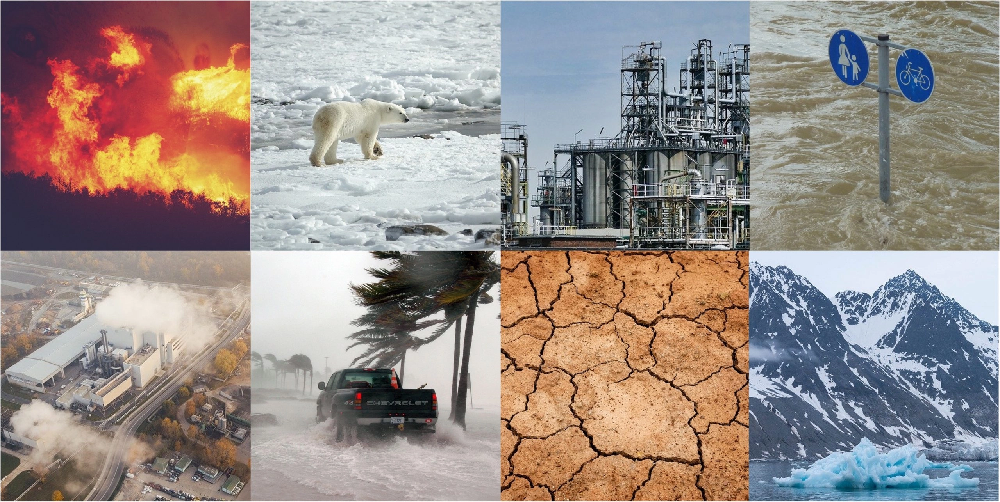In Short : In 2024, the focus on global climate adaptation will likely intensify, with a key emphasis on implementing resilient strategies, enhancing international cooperation, and integrating innovative technologies to address climate change impacts effectively.
In Detail : After two years of international negotiations, consultations, and convenings, world leaders recently agreed to the planet’s first-ever international framework on climate adaptation. Now comes the hard part.
The new UAE Framework for Global Climate Resilience uniquely positions climate change adaptation — the process of building resilience to current and future impacts of climate change — as a top priority for all nations. Remarkably, establishment of the framework at COP 28, the UN Climate Change Conference in Dubai, is the first time that climate adaptation is the primary focus of an internationally agreed framework.
Here are our reflections as close observers of this process.
A FIRST-OF-ITS-KIND FRAMEWORK FOR CLIMATE ADAPTATION
The framework’s adoption represents the culmination of two years of workshops and consultations with hundreds of government officials, scientists, and advocates. It expands on the Global Goal on Adaptation (GGA), which was established in the Paris Agreement in 2015, and will improve our ability to measure the GGA — allowing the international community to take stock of progress over time and maintain accountability for achieving the goal. The new framework is also an important means for accelerating action on and support for adaptation, which has not received the same level of funding or attention as other elements of the Paris Agreement.
While the framework does not articulate a headline target akin to the Paris Agreement’s global warming threshold of 1.5° C over preindustrial temperatures by 2030, it does place focus squarely on the “collective well-being of all people, the protection of livelihoods and economies, and the preservation and regeneration of nature, for current and future generations, in the context of the temperature goal.” In other words, people, livelihoods, and well-being serve as the framework’s guiding star. It also prioritizes key sectors for increased climate resilience, including food and agriculture, water, cities and infrastructure, ecosystems and nature, health, livelihoods, and cultural heritage, sending an important message to practitioners in these sectors that urgent action is needed.
In addition, the framework details a series of targets linked to different stages of the adaptation policy cycle — a governmental policy process that starts with national assessments of climate risks and vulnerabilities, followed by creation of a national adaptation plan, then implementation of the plan and evaluation of progress in reducing climate vulnerability. For instance, the framework calls for all countries to have in place a national adaptation plan by 2030. It has a similar target for the implementation of those plans (“By 2030 all Parties have progressed in implementing their national adaptation plans, policies and strategies”), sending a clear signal to decision-makers about expectations for stronger adaptation outcomes at a country level. More ambitiously, it places a particular spotlight on the importance of early warning systems for adaptation and calls for all countries to put in place multi-hazard early warning systems and climate information services for risk reduction by 2027, in line with the UN Secretary-General’s Early Warnings for All Initiative.
The framework also establishes a two-year timeline to develop indicators, such as the number of countries with a national adaptation plan or the number of countries covered by early warning information, and the methodologies used to measure those indicators. It will be essential for the new framework agreed to in Dubai to build upon existing frameworks, such as the Sustainable Development Goals, the Sendai Framework for Disaster Risk Reduction, and other multilateral agreements that have relevant indicators. It will also require the development of new indicators where gaps exist in current frameworks. This process will need to incorporate the expertise of scientists, researchers, and practitioners across the globe to ensure that we are measuring what matters and not just what is easiest to measure.
FINANCING THE FRAMEWORK
The framework recognizes the importance of international investment to achieve adaptation targets and goals while acknowledging the widening gap in adaptation financing — currently estimated between $194 billion and $366 billion per year, according to the UN Environment Programme. It calls on developed economies to double their adaptation finance commitments as they pledged to do in response to this ever-widening gap, but it does not set any new financial targets.
This year’s Climate Change Conference, COP 29, in Baku, Azerbaijan, will concentrate on climate finance, including reaching international consensus on a collective finance goal that would replace the soon-to-expire target of $100 billion a year between 2020 and 2025 set by the Paris Agreement. Given the tremendous shortfalls in adaptation finance, it will be crucial that this new overall finance goal mobilizes sufficient resources for successful adaptation without reducing available funding for other climate actions. Discussions are already underway to explore a sub-target on adaptation in the new finance goal to ensure a dedicated and sufficient resources for adaptation measures.
While the UAE Framework for Global Climate Resilience marks a crucial step forward, the international community must also find new and creative ways to mobilize financial resources, especially for developing economies. These investments must be both larger and more flexible than current financing if low-income nations are to meet the level of ambition on climate adaptation outlined in the new framework.
As Simon Stiell, the Executive Secretary of the United Nations Framework Convention on Climate Change (UNFCCC), said during COP 28, “Adaptation is an investment in our futures, not an admission of defeat. Let us give it the money and attention it deserves.”

